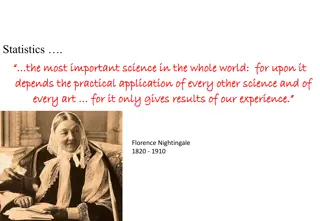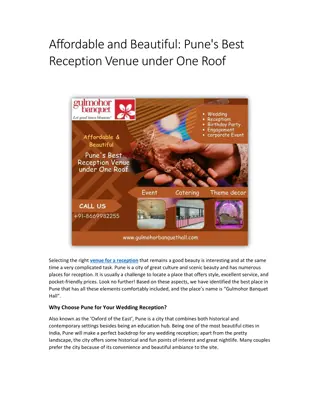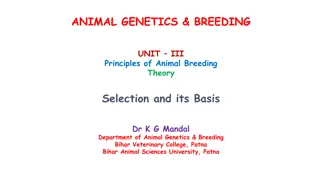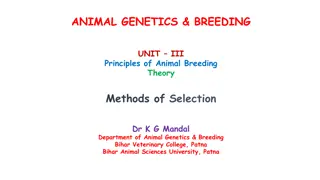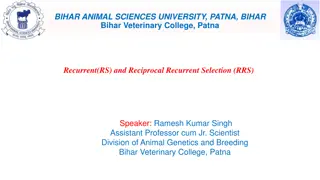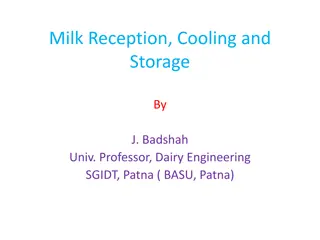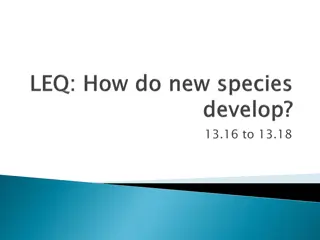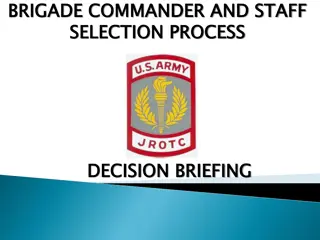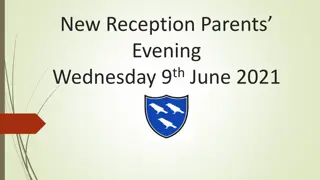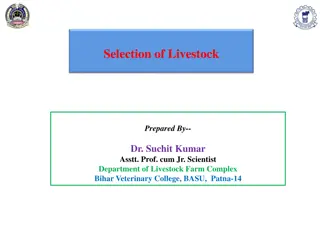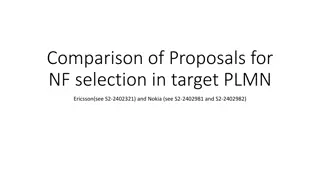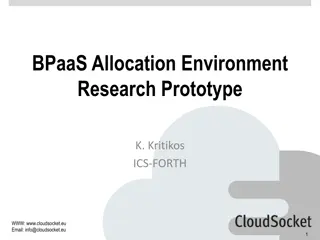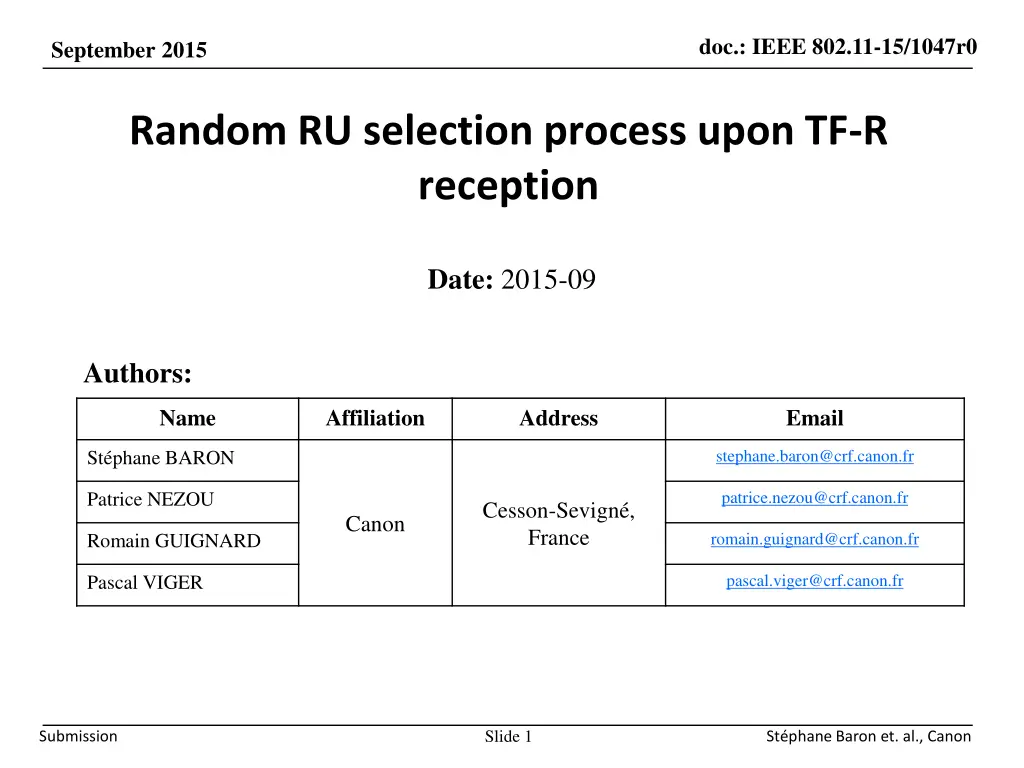
IEEE 802.11-15/1047r0 September 2015 Random RU Selection Process for MU UL Transmissions
Explore the proposed random RU selection process for MU UL transmissions in IEEE 802.11-15/1047r0 September 2015. This process aims to reduce spectrum wastage and collisions by utilizing active backoff values to select eligible resource units (RUs). Learn about the principles, advantages, and impacts on contention-based access technologies like CSMA/CA.
Download Presentation

Please find below an Image/Link to download the presentation.
The content on the website is provided AS IS for your information and personal use only. It may not be sold, licensed, or shared on other websites without obtaining consent from the author. If you encounter any issues during the download, it is possible that the publisher has removed the file from their server.
You are allowed to download the files provided on this website for personal or commercial use, subject to the condition that they are used lawfully. All files are the property of their respective owners.
The content on the website is provided AS IS for your information and personal use only. It may not be sold, licensed, or shared on other websites without obtaining consent from the author.
E N D
Presentation Transcript
doc.: IEEE 802.11-15/1047r0 September 2015 Random RU selection process upon TF-R reception Date: 2015-09 Authors: Name Affiliation Address Email stephane.baron@crf.canon.fr St phane BARON patrice.nezou@crf.canon.fr Patrice NEZOU Cesson-Sevign , France Canon romain.guignard@crf.canon.fr Romain GUIGNARD pascal.viger@crf.canon.fr Pascal VIGER Slide 1 Submission St phane Baron et. al., Canon
doc.: IEEE 802.11-15/1047r0 September 2015 Abstract 802.11ax SFD specifies OFDMA to be supported. [2] [1] defines a trigger frame (TF-R) to enable random access mechanism for MU UL transmissions. The selection method of the Random RU (resource unit (RU) that can be randomly accessed by more than one STA) is TBD. The random selection of random RU suffers of a waste of spectrum due to collided and unused RU (similar to slotted aloha method )[1][3]. In this contribution, we propose a random RU selection procedure for the STAs receiving a TF-R frame, based on their active backoff values. Submission Slide 2 St phane Baron et. al., Canon
doc.: IEEE 802.11-15/1047r0 September 2015 Background CSMA/CA 802.11 is contention based access technology - CSMA/CA, which is originally designated for single STA to occupy the medium in a fairness way. In the contention period, a STA could 1. Not transmit due to backoff procedure 2. Try to access the medium upon its backoff counts down to 0 (Either successfully transmit a packet, or collide with other station s transmission) The random backoff procedure is a fully distributed method and ensures the fairness (allocates the channel to stations with roughly the same probability). Submission Slide 3 St phane Baron et. al., Canon
doc.: IEEE 802.11-15/1047r0 September 2015 Background Random Trigger Frame (TF-R) TF-R is proposed in last July IEEE meeting [1] The Trigger frame indicates at least one available resource unit for random access UL MU transmissions using TF-Rs reduce number of UL SU transmissions in conventional EDCA-based access: In the 802.11ax dense context, as the number of contending stations increases, the classical 802.11 CSMA/CA experiences a significant collision rate. Submission Slide 4 St phane Baron et. al., Canon
doc.: IEEE 802.11-15/1047r0 September 2015 RU selection for Random MU-UL transmission Principle The multiple stations use their pending backoff count to select a Resource Unit (RU) to be used for the next UL MU TXOP: Upon receiving a TF-R, the stations analyze if they are eligible: The current backoff count should fit in the number of available RUs (for example, backoff value < Nb of random RUs defined by the TF-R) A station transmits inside the RU corresponding to its backoff value (for example, RU index = backoff value), and redraws its backoff. At the UL MU TXOP end, all other (non-eligible) .11ax stations should also have updated their backoff counts (for example : decreases per the number of available RUs specified in TF-R) Advantages Respectful of the EDCA (including Access Category management). No need to perform a specific random computation on TF-R reception (backoff is already randomly generated) The proposed station-eligibility procedure reduces the probability of RU collision Slide 5 Submission St phane Baron et. al., Canon
doc.: IEEE 802.11-15/1047r0 September 2015 Example Example: TF-R indicates 8 random RUs, over a 40MHz band Due to (backoff) randomization: some RUs are free, some are collided AP MU STAs AP SIFS SIFS PIFS UL MU PPDU (STA i) RU#1 RU#2 Resulting Backoffs after TF-R: Primary 20MHz channel TF Backoff at last Contention : (before TF-R): ACK UL MU PPDU (STA 2) UL MU PPDU (STA 3 & n-1) RU#3 RU#4 X 10 Defer later STA1 10-8=2 STA1 STA2 STA3 RU#5 3 STA2 STA3 No more data UL MU PPDU (STA 6) RU#6 Secondary 20MHz channel New bckf value 4 TF ACK RU#7 New bckf value RU#8 STAn-1 4 STAn-1 STAn STAn 6 No more data UL MU TXOP Slide 6 Submission St phane Baron et. al., Canon
doc.: IEEE 802.11-15/1047r0 September 2015 Summary In this presentation, we proposed a selection process of the random RU for STAs for UL OFDMA transmissions, triggered by a random trigger frame (TF-R). The method, based on backoff values, is respectful of the EDCA (including Access Category management). Random RU usage efficiency can be further improved. Slide 7 Submission St phane Baron et. al., Canon
doc.: IEEE 802.11-15/1047r0 September 2015 References [1] IEEE 802.11-15/0875r1 Random Access with Trigger Frames using OFDMA [2] IEEE 802.11-15/0132r2 Specification Framework for Tax [3] IEEE 802.11-15/0843r1 UL MU OFDMA Analysis Slide 8 Submission St phane Baron et. al., Canon
doc.: IEEE 802.11-15/1047r0 September 2015 Straw-poll Do you agree to add to the TG specification framework document? The spec shall define a procedure for random resource unit selection in a UL OFDMA TXOP (triggered by a TF-R), respectful of EDCA (including Access Category management), that is based on the backoff count(s) of any .11ax station willing to transmit. Yes: No: Abstain: Slide 9 Submission St phane Baron et. al., Canon


